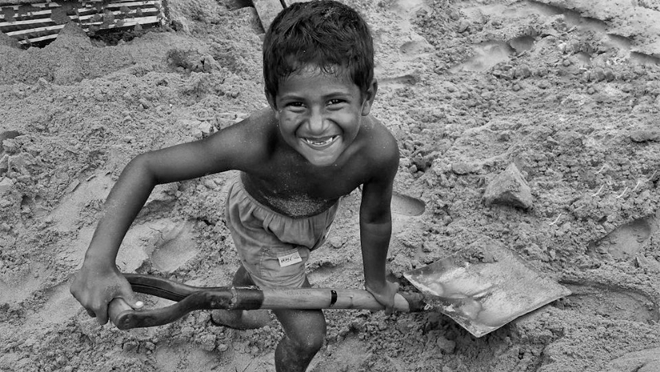Child labour in Bangladesh: A continuous battle between expectation and reality
Child labour in Bangladesh: A continuous battle between expectation and reality

Out of every ten children worldwide, one is trapped in child labour, amounting to a startling total of 160 million. As we mark World Day against Child Labour on June 12, this harsh number is certainly a global reality check. In Bangladesh, the situation is just as critical. Despite years of policy change and ambitious national targets, child labour, particularly in informal and hazardous occupations, is a bitter fact of life for an estimated two million children.
As per the National Child Labour Survey (NCLS) of 2022, approximately 8.9% of children between the ages of 5 – 17, or around 3.54 million, are employed. Among them, 1.78 million are working as child labourers, and 1.07 million (2.7%) work in harmful and hazardous conditions, including exposure to harmful substances, lifting heavy loads, and working in unsafe conditions.
Sadly, this is an increase on the NCLS 2013, when a total of 8.7% of children were employed and 4.3% in child labour. As a percentage, the number of children working in hazardous work fell from 3.2% to 2.7%, yet the overall number is troublingly high.
Progress on paper
Bangladesh has ratified important international conventions related to children’s rights and labour, including the ILO Minimum Age Convention (C138) in 2022 and the Worst Forms of Child Labour Convention (C182) in 2001. The amended Bangladesh Labour Act (BLA) 2006, in force since 2013, prohibits work for children below age 14 and allows adolescents (14 -17) only in non-hazardous work under supervised conditions.
The government has also declared that eight major industrial sectors, including garments and shipbreaking, are officially child-labour free. In schools, initiatives such as Reaching Out-of-School Children (ROSC) and free primary education seek to get children into the classroom.
Ground realities and informal challenges
Despite all the efforts, the informal sector is still a principal employer in agriculture, in household, and in urban slums, where regulation is minimal. Domestic work, in which girls are often involved, is largely unregulated, and most children work more than 42 hours a week. According to a recent study in 2021 conducted by the Bangladesh Institute of Labour Studies, 38.6 percent of urban domestic workers are under the age of 18.
In urban areas such as Dhaka, studies published by Institute of Development Studies (2022), indicate that one third of children in slums are now engaged in hazardous work. These include working in tanneries, informal garments, and garbage collection, where they do not have appropriate safety gear and are at risks of injury, illness, and abuse.
The COVID-19 crisis worsened this reality, with more than a 40% rise in child labour, school closure resulting in an estimated 1.7 million children dropping out, and an additional 13% of children being married off. Undocumented and vulnerable children, particularly those on the streets or in refugee camps, are usually outside of legal safeguards and schooling. They become victims of trafficking, sexual and economic exploitation, forced labour, and more.
Legal and policy loopholes
Although legislative advancements have been achieved by Bangladesh, some important ILO conventions have not been ratified, including those related to medical examinations of young workers, agricultural safety, and workers in the home.
Additionally, the Bangladesh Labour Act does not cover informal agriculture work, domestic work, or family labour when less than 10 workers are involved. This leaves most working children outside of protection. Another complicated issue is age identification, as an estimated 44% of children under age 5 did not have birth registration as of 2019.
On top of everything, the definitions of words such as “child”, “adolescent”, “light work”, and “hazardous work” are not well understood by families and employers, particularly in low-literacy and rural areas. These misunderstandings are a critical factor in continued exploitation and under-reporting.
Looking forward
Bangladesh aims to eradicate all types of child labour by 2025, in line with SDG Target 8.7 that prompts to take immediate action to end child labour. The goal, though alluring, is still a long way off. As we mark the International Day against Child Labour, it is important to note that although the law and policy are in place, implementation is uneven, in both informal and hazardous areas.
As a nation, we need to do more than merely regulating the industry and invest in safety nets, awareness, and inclusive education systems to properly safeguard our little ones. Without tackling the informal sector, improving birth registration, enhancing schooling and stipends, and engaging communities in decision-making, the goal of eliminating child labour will remain a distant star twinkling in the sky above, far beyond our reach.


